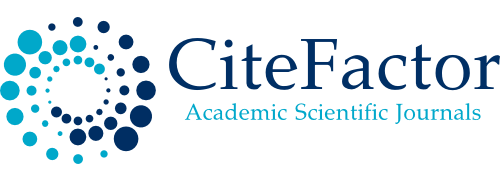Coping with Workplace Bullying among Front Line Employees: A cross-sectional study
DOI:
https://doi.org/10.61841/yd510n89Keywords:
workplace bullying, coping strategies,, frontline employeesAbstract
Bullying at work has recently been a growing concern by researchers and practitioners from various disciplines including psychology and management. This study examines the different types of coping strategies used by targets of workplace bullying. A sample of (N = 270) front-line employees from various organisations in the Klang Valley area participated in this cross-sectional study. The survey measures a number ofdifferent types of bullying behavioursviathe Negative Acts Questionnaire (NAQ-R) and the different types of coping using existing scales that measures how victims deal with bullying. Results show that almost three quarters of the respondents of the study have experience of being mistreated via person-related (73.7%) and work-related bullying behaviours (75.6%) while an average of 15% were victims of workplace bullying experiencing negative acts at least on a weekly basis if not daily. Results also show that self-doubt was significantly correlated to all three types of workplace bullying behaviours and that problem solving was negatively correlated with personal-related bullying (r = -.30**). Although, it was found that majority of the respondents tend to ignore the problem and problem solving was the least choice of their coping strategy. T-test results showed significant differences between gender where female utilised more passive coping [t(268) = -2.07, p = .040] and ignoring [t(268) = -2.93, p = .004] while male utilised more problem solving [t(268) = 2.33, p = .021]. Findings are further discussed in the article.
Downloads
References
1. Dehue, F., Bolman, C., & Völlink, T. (2012). Coping With Bullying at Work and Health Related Problems,
19(3), 175–197. https://doi.org/10.1037/a0028969
2. Einarsen, S. (2000). Harassment and bullying at work: A review of the Scandinavian approach. Aggression and Violent Behavior, 5(4), 379–401. https://doi.org/10.1016/S1359-1789(98)00043-3
3. Einarsen, S. Hoel, H., & Notelaers, G. (2009). Measuring exposure to bullying and harassment at work: Validity, factor structure and psychometric properties of the Negative Acts Questionnaire-Revised. Work & Stress, 23(1), 24–44. https://doi.org/10.1080/02678370902815673
4. Kumar A, Hasamnis A. "A Clinical Update on Peroxisome Proliferator-Activated Receptors." Systematic Reviews in Pharmacy 1.2 (2010), 175-181. Print. doi:10.4103/0975-8453.75075
5. Einarsen, S., Raknes, B. I., & Matthiesen, S. B. (1994). Bullying and harassment at work and their relationships to work environment quality: An exploratory study. European Work and Organizational Psychologist, 4(March 2015), 381–401. https://doi.org/10.1080/13594329408410497
6. Einarsen, S & Skogstad, A. (1996). Bullying at work: Epidemiological findings in public and private organizations. European Journal of Work and Organizational Psychology, 5(2), 185–201. https://doi.org/10.1080/13594329608414854
7. Eriksson, M., & Lindstrom, B. (2007). Antonovsky’s sense of coherence scale and its relation with quality of life: a systematic review. Journal of Epidemiology & Community Health, 61(11), 938–944. https://doi.org/10.1136/jech.2006.056028
8. Fitzgerald, L. F., Drasgow, F., Hulin, C. L., Gelfand, M. J., & Magley, V. J. (1997). Antecedents and consequences of sexual harassment in organizations: A test of an integrated model. Journal of Applied Psychology, 82(4), 578–589. https://doi.org/10.1037/0021-9010.82.4.578
9. Folkman, S., & Lazarus, R. S. (1988). The relationship between coping and emotion: Implications for theory and research. Social Science and Medicine, 26(3), 309–317. https://doi.org/10.1016/0277- 9536(88)90395-
10. Folkman, S., & Moskowitz, J. T. (2004). Coping: Pitfalls and Promise. Annual Review of Psychology, 55(1), 745–774. https://doi.org/10.1146/annurev.psych.55.090902.141456
11. Hairul Akmal Mohd Halim, Fatimah wati Halim & Rozainee Khairuddin. (2017). Does Personality Influence Workplace Bullying and Lead to Depression Among Nurses? Jurnal Pengurusan, 53: 3-12
12. Hauge, L. J., Skogstad, A., & Einarsen, S. (2009). Individual and situational predictors of workplace bullying: Why do perpetrators engage in the bullying of others? Work & Stress, 23(4), 349–358. https://doi.org/10.1080/02678370903395568
13. Hidzir, N. ’Izzati, Jaafar, M., Jalali, A., & Dahalan, N. (2017). An Exploratory Study on the Relationship between the Personal Factors of the Perpetrator and Workplace Bullying. Jurnal Pengurusan, 49, 67–76. https://doi.org/10.17576/pengurusan-2017-49-06
14. Hoel, H, Faragher, B., & Cooper, C. (2004). Bullying is detrimental to health, butrnall bullying behaviours are notrnnecessarily equally damaging. British Journal of Guidance & Counselling, 32(3), 367–387.
15. Hogh, A., & Dofradottir, A. (2001). Coping with bullying in the workplace. European Journal of Work and Organizational Psychology, 10(4), 485–495. https://doi.org/10.1080/13594320143000825
16. Jalali, A., Hidzir, N. I., Jaafar, M., & Dahalan, N. (2019). Factors that trigger bullying amongst subcontractors toward intention to quit in the construction projects. Built Environment Project and Asset Management.
17. Keashly, L., Trott, V., & MacLean, L. M. (1994). Abusive behavior in the workplace: a preliminary investigation. Violence and Victims, 9(4), 341–357.
18. Khalib, A. L., & Ngan, H. U. (2006). Workplace Bullying : Time To Understand Its Roots. Malaysian Journal of Community Health, 12, 1–10.
19. Lazarus, R. S., & Folkman, S. (1984). Stress, appraisal, and coping. (S. Folkman, Ed.). New York: New York : Springer, 1984.
20. Lechner, L., Bolman, C., & van Dalen, A. (2007). Definite involuntary childlessness: Associations between coping, social support and psychological distress. Human Reproduction, 22(1), 288–294. https://doi.org/10.1093/humrep/del327
21. Lee, R. T., & Brotheridge, C. M. (2006). When prey turns predatory: Workplace bullying as a predictor of counteraggression/bullying, coping, and well-being. European Journal of Work and Organizational Psychology, 15(3), 352–377. https://doi.org/10.1080/1359432060063653
22. Lutgen-sandvik, P., Tracy, S. J., & Alberts, J. K. (2007). Burned by Bullying in the American Workplace: Prevalence, Perception, Degree and Impact*. Journal of Management Studies, 44(6), 837–862. https://doi.org/10.1111/j.1467-6486.2007.00715.x
23. Olafsson, R. F., & Johannsdottir, H. L. (2004). Coping with bullying in the workplace: The effect of gender, age and type of bullying. British Journal of Guidance and Counselling, 32(3), 319–333. https://doi.org/10.1080/03069880410001723549
24. Miliken, F., Morrison, E., & Hewlin, P. (2003). An exploratory study of employee silence: Issues that Employees Don’t Communicate Upward and Why. Journal of Management Studies, 40(6), 1453–1476. https://doi.org/10.1111/1467-6486.00387
25. Mikkelsen, Eva Gemzøe, & Einarsen, S. (2002). Relationships between exposure to bullying at work and psychological and psychosomatic health complaints: The role of state negative affectivity and generalized self-efficacy. Scandinavian Journal of Psychology, 43(5), 397–405. https://doi.org/10.1111/1467- 9450.00307
26. Mokhtar, D., Adnan, H. A., & Roshaizad, N. A. (2018). The Correlates of Workplace Bullying on Employees’ Health and Well-being among Frontline Employees. Jurnal Psikologi Malaysia, 32(4): 88-101
27. Nielsen, M. B., Matthiesen, S. B., & Einarsen, S. (2008). Sense of Coherence as a Protective Mechanism Among Targets of Workplace Bullying, 13(2), 128–136. https://d oi.org/10.1037/1076-8998.13.2.128
28. Omari, M. (2007). Towards dignity and respect at work: An exploration of bullying in the public sector.
29. Pitchan, M. A., Omar, S. Z., & Ghazali, A. H. A. (2019). Amalan Keselamatan Siber Pengguna Internet terhadap Buli Siber, Pornografi, E-Mel Phishing & Pembelian dalam Talian. Jurnal Komunikasi: Malaysian Journal of Communication, 35(3).
30. Rahim, M. A. Western K. U., & Magner, N. R. (1995). Confirmatory factor analysis of the styles of
handling interpersonal conflict: first-order factor model and its invariance across groups. The Journal of Applied Psychology, 80(1), 122–132. Retrieved from http://www.ncbi.nlm.nih.gov/pubmed/7706190
31. Rayner, C., & Keashly, L. (2005). Bullying at Work: A Perspective From Britain and North America. In S. Fox & P. E. Spector (Eds.), Counterproductive work behavior: Investigations of actors and targets (p. 271– 296). American Psychological Association. https://doi.org/10.1037/10893-011
32. Reknes, I., Einarsen, S., Pallesen, S., & Bjorvatn, B. (2016). Exposure to bullying behaviors at work and subsequent symptoms of anxiety : the moderating role of individual coping style. Industrial Health, 54, 421–432. https://doi.org/10.2486/indhealth.2015-0196
33. Richman, J. A., Rospenda, K. M., Flaherty, J. A., & Freels, S. (2001). Workplace harassment, active coping, and alcohol-related outcomes. Journal of Substance Abuse, 13(3), 347–366. https://doi.org/10.1016/S0899-3289(01)00079-7
34. Savitha t. (2015) perspective study of bio film and its applications. Journal of Critical Reviews, 2 (4), 1-5.
35. Rodríguez-Muñoz, A., Moreno-Jiménez, B., & Sanz-Vergel, A. I. (2015). Reciprocal relations between workplace bullying, anxiety, and vigor: a two-wave longitudinal study. Anxiety, Stress, & Coping, 5806(July), 1–17. https://doi.org/10.1080/10615806.2015.1016003
36. Rusbult, C. E., Farrell, D., Rogers, G., & Mainous, A. G. (1988). Impact of Exchange Variables on Exit, Voice, Loyalty, and Neglect: an Integrative Model of Responses To Declining Job Status Satisfaction. Academy of Management Journal, 31(3), 599–627. https://doi.org/10.2307/256461
37. Ruth Packiavathy RD, and Samsiah M, and Hamidah H, and Santhna LP, (2009). Workplace violence experienced by nurses in Universiti Kebangsaan Malaysia Medical Centre. Medicine & Health, 4 (2). pp. 115-121. ISSN 1823-2140
38. Salmivalli, C., Karhunen, J., & Lagerspetz, K. M. J. (1996). How do the victims respond to bullying? Aggressive Behavior, 22(2), 99–109. https://doi.org/10.1002/(SICI)1098-2337(1996)22:2<99::AID- AB3>3.0.CO;2-P
39. Salin, D. (2003). Ways of Explaining Workplace Bullying: A Review of Enabling, Motivating and Precipitating Structures and Processes in the Work Environment. Human Relations, 56(10), 1213–1232. https://doi.org/10.1177/00187267035610003
40. Smith, C. A., & Lazarus, R. S. (1990). Emotion and Adaptation. In L. A. Pervin (Ed.), Handbook of Personality: Theory and Research (pp. 609–637). New York: Guilford.
41. Stanton, A. L., Revenson, T. A., & Tennen, H. (2007). Health Psychology: Psychological Adjustment to Chronic Disease. Annual Review of Psychology, 58(1), 565–592. https://doi.org/10.1146/annurev.psych.58.110405.085615
42. Stroebe, W., Zech, E., Stroebe, M. S., & Abakoumkin, G. (2005). Does social support help in bereavement?
Journal of Social and Clinical Psychology, 24(7), 1030–1050. https://doi.org/10.1521/jscp.2005.24.7.1030
43. Shapovalov, V.V., Gurevich, B.S., Dudnikov, S.Y., Belyaev, A.V., Zagorsky, I.G.Optical non-invasive methods for glucose determination in human blood(2018) International Journal of Pharmaceutical Research, 10 (1), pp. 324-329.
https://www.scopus.com/inward/record.uri?eid=2s2.085057062870&partnerID=40&md5=066604f29ec4fa 16e76049c6383d038a
44. Talib, A., Al, S., & Hassan, A. (2014). Workplace Bullying in Malaysia : An Exploratory Study. Malaysian Management Review, 49(1), 1–8.
45. Tehrani, N. (2012). Bullying and post-traumatic stress. In Workplace bullying: Symptoms and solutions
(pp. 35–50).
46. Tsuno, K., Kawakami, N., Inoue, A., & Abe, K. (2010). Measuring workplace bullying: Reliability and validity of the Japanese version of the negative acts questionnaire. Journal of Occupational Health, 52(4), 216–226. https://doi.org/10.1539/joh.L10036
47. Zapf, D., & Gross, C. (2001). Conflict escalation and coping with workplace bullying: A replication and extension. European Journal of Work and Organizational Psychology, 10(4), 497–522.
48. Puliyath, S. (2014). Advanced Secure Scan Design against Scan Based Differential Cryptanalysis.International Journal of Advances in Engineering and Emerging Technology,5(6), 274-279.
49. Rinesh,S., and Jagadeesan,S. (2014). Detection and Localization of Multiple Spoofing Attackers in Wireless Networks. Excel International Journal of Technology, Engineering and Management, 1(1), 17-20.
50. Kaplan, S., Canan, S., Eyüp Altunkaynak, M., Odaci, E., Aslan, H., Ünal, B. An unbiased way to estimate total quantities: The fractionator technique(2012) NeuroQuantology, 10 (1), pp. 54-65.
51. Gardiner, J., Overall, R., Marc, J.The fractal nature of the brain: Eeg data suggests that the brain functions as a "quantum computer" in 5-8 dimensions (2010) NeuroQuantology, 8 (2), pp. 137-141.
Downloads
Published
Issue
Section
License

This work is licensed under a Creative Commons Attribution 4.0 International License.
You are free to:
- Share — copy and redistribute the material in any medium or format for any purpose, even commercially.
- Adapt — remix, transform, and build upon the material for any purpose, even commercially.
- The licensor cannot revoke these freedoms as long as you follow the license terms.
Under the following terms:
- Attribution — You must give appropriate credit , provide a link to the license, and indicate if changes were made . You may do so in any reasonable manner, but not in any way that suggests the licensor endorses you or your use.
- No additional restrictions — You may not apply legal terms or technological measures that legally restrict others from doing anything the license permits.
Notices:
You do not have to comply with the license for elements of the material in the public domain or where your use is permitted by an applicable exception or limitation .
No warranties are given. The license may not give you all of the permissions necessary for your intended use. For example, other rights such as publicity, privacy, or moral rights may limit how you use the material.









